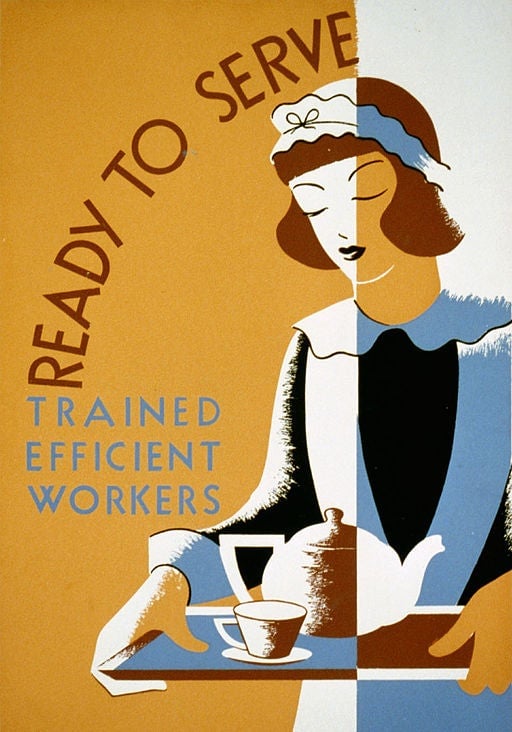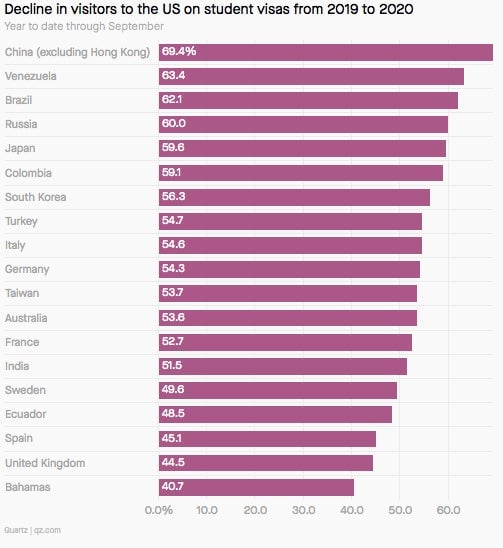The Memo: Workplace politics
To modern workers everywhere,

To modern workers everywhere,
If it was never completely possible to leave politics at the door to your workplace, now the idea is probably laughable. In the US, especially, the political has become deeply personal—and everything, including a deadly virus—is charged with partisan significance.
Work, meanwhile, is one of the main settings where we now process shock, fear, or sadness over extreme changes or tragic events, in addition to doing our actual jobs. But how do you do that without ratcheting up the tension or unintentionally excluding and offending people in what’s arguably the most divisive election year yet?
One option is to lean on the pillars of non-violent communication, a process for interacting with people that emphasizes mutual respect and shifts the tone of discussions away from boiling points. The approach was created by the late psychologist Marshall Rosenberg in the 1960s, and has been adapted and applied in regions with entrenched warfare, in workplaces, and in everyday interpersonal conflicts.
As a colleague or manager, you can support people on an individual level by naming what you see, or just identifying the expression on someone’s face, and making yourself available for a conversation. Don’t assign a label or guess what’s going on for someone else.
Facts and science should settle many debates, but we’ve seen, certainly over the past four years, how they’ve instead been cheapened or made to seem untrustworthy. Offering people information or data that differs from what they believe is “where you get into conflict energy very quickly,” says Dian Killian, a Brooklyn-based workplace communication consultant and certified trainer with the Center for Nonviolent Communication. “The other person will experience and judge it as pushback or criticism, and in your mind, you think you’re just providing information.”
Rosenberg developed a rule of thumb that essentially boils down to empathy over education. The most immediate need that people have is to be heard, and once that has happened, Killian says, the situation often deescalates quickly.—Lila MacLellan
+ Read more of Killian’s advice in Quartz at Work’s latest: “The nonviolent communicator’s guide to election conversations at work”
Five things we learned this week
Unresolved grief takes a huge toll on workplaces. Here’s what to do about it.
The office fulfills a deeper purpose than just “work.” Missing it is central to our angst.
What is going to happen to the Affordable Care Act? We considered every scenario.
Feminists in Nigeria are at the forefront of protests against police brutality. Their leadership contradicts stereotypes about women wielding power.
America’s H-1B visa loss could be India’s gain. The technical jobs held by highly skilled, young workers from India may well follow them home.
How to manage mental health at every level of your organization
What can companies, managers, and colleagues do to help people cope with the current pressures and avoid burnout? We put that question to eight experts at our Oct. 29 Quartz at Work (from home) workshop, which was sponsored by Evernorth. A few of our top takeaways:
- Move beyond “How are you?” and other questions that similarly lead to programmed responses
- Know when and how to direct people to professional services
- Emotional wellness requires ongoing work; it is not a one-and-done management exercise
+ Quartz members can read the recap or watch the full replay for details and more tips from our global panel, including Spotify peer-to-peer mental health ambassador Jade Stanley, Deloitte US chief well-being officer Jen Fisher, Cisco VP of benefits Ted Kezios, and psychiatrist Naeem Dalal, public health chairperson of the Zambia Medical Association. Don’t have a membership yet? Sign up for a free 7-day trial.
30-second case study
The Works Progress Administration (WPA) was a hallmark of Franklin D. Roosevelt’s New Deal, and wildly controversial in its day. Critics accused the program of paying people to spend time on useless tasks, coddling workers, flagrantly overspending, and taking the country to the brink of straight-up Communism. But it also put 8.5 million Americans to work during the Great Depression, and left a legacy of well-designed infrastructure, some of which is still used today. Still the largest subsidized-jobs effort that the US has ever undertaken, the WPA put Americans to work building roads, airports, bridges, parks; serving hot lunches and running nursery schools; painting murals and interviewing former slaves. Ralph Ellison, Zora Neale Hurston, and John Cheever worked for the WPA. So did Jackson Pollock and Mark Rothko.
The program was far from perfect. Only one person per household was allowed to hold a WPA job, a rule that typically benefited men. Racial discrimination was a real factor, too, with Mexican Americans and Black participants frequently relegated to domestic-service roles or jobs with harsh working conditions.
The takeaway: In the midst of an economically draining pandemic, it’s time for US policymakers to start thinking big. That includes considering what a new WPA could look like in the coronavirus era. (Other models might include Germany’s Kurzarbeit system, which has allowed businesses to keep workers on even when the economy crashed, with the government temporarily footing the bill for part of employees’ salaries.)
Right now, there are 12.6 million Americans officially unemployed, another 7.2 million who want a job but aren’t actively searching, and 6.3 million who are working part-time but want full-time work. In order to employ 40% of people in need of work, as the WPA did, a new national scheme would have to create about 10 million jobs.
+ Learn more about how the WPA is inspiring contemporary thinking about subsidized jobs programs in Sarah Todd’s new piece for Quartz at Work on the 90-year-old strategy that could end the US unemployment crisis.

It’s a fact
International students contributed $44 billion to the US economy in 2018, $15 billion of which came from Chinese students. Expect both totals to be a lot lower this year. Quartz data editor Dan Kopf reports that visits to the US from people on student visas fell 61% in the first nine months of 2020 compared to the same period of 2019, according to US Commerce Department data. The biggest drop from any country came from China, with student visa visits falling by almost 70%.

Words of wisdom
“A lot of companies are pushing [employees to vote], so much more than we’ve ever seen before, and I doubt that’s because they want the status quo.”—Cathy Hart, president and CEO, Slainte Group
+ How strong a stand were CEOs willing to take in the US election? Quartz at Work’s Lila MacLellan surveyed the landscape and discussed the ethics with a range of thinkers, including a philosopher, a business professor, and a longtime HR executive. Read more here.
The status of the H-1B

Many consider the H-1B visa to be the pipeline that helped America build the world’s biggest tech hub, in Silicon Valley. Over the last 30 years, beneficiaries of the visa, now numbering in the millions, have filled a massive skills gap in critical fields of science, technology, engineering, and mathematics.
But the visa category has come under immense criticism. Decades after its creation by one Republican president, another Republican president has targeted it as part of an anti-immigration clampdown. Our latest field guide examines how the visa became such a painful touchpoint in the debate over US immigration reform, and whether it can survive. Read more about the status of the H-1B.
Not yet a Quartz member? Get unlimited access to each of our weekly field guides, and all of Quartz’s global journalism, with a Quartz membership. Use the code QZTWENTY to get 20% the first-year subscription price.
ICYMI
Politics aside, we don’t recommend taking your leadership cues from the current White House occupant. (Squawking, flapping, and leaving a mess all over other people’s work, Donald Trump is the presidential archetype of what management gurus Ken Blanchard and Spencer Johnson once described as a “seagull manager.”) Instead, consider the example set by Abraham Lincoln, who mastered the art of making tough decisions in high-stakes situations with grace and calm. In this gem from our archive, Nancy F. Koehn, a historian at Harvard Business School, offers seven leadership lessons from America’s 16th president, who knew his mission, solicited advice widely, and understood the power of sometimes doing nothing at all.
You got The Memo!
Our best wishes for a productive and creative day. Please send any workplace news, comments, subsidized jobs programs, and Lincolnesque leadership lessons to [email protected]. Get the most out of Quartz by downloading our app and becoming a member. This week’s edition of The Memo was produced by Heather Landy and Sarah Todd.